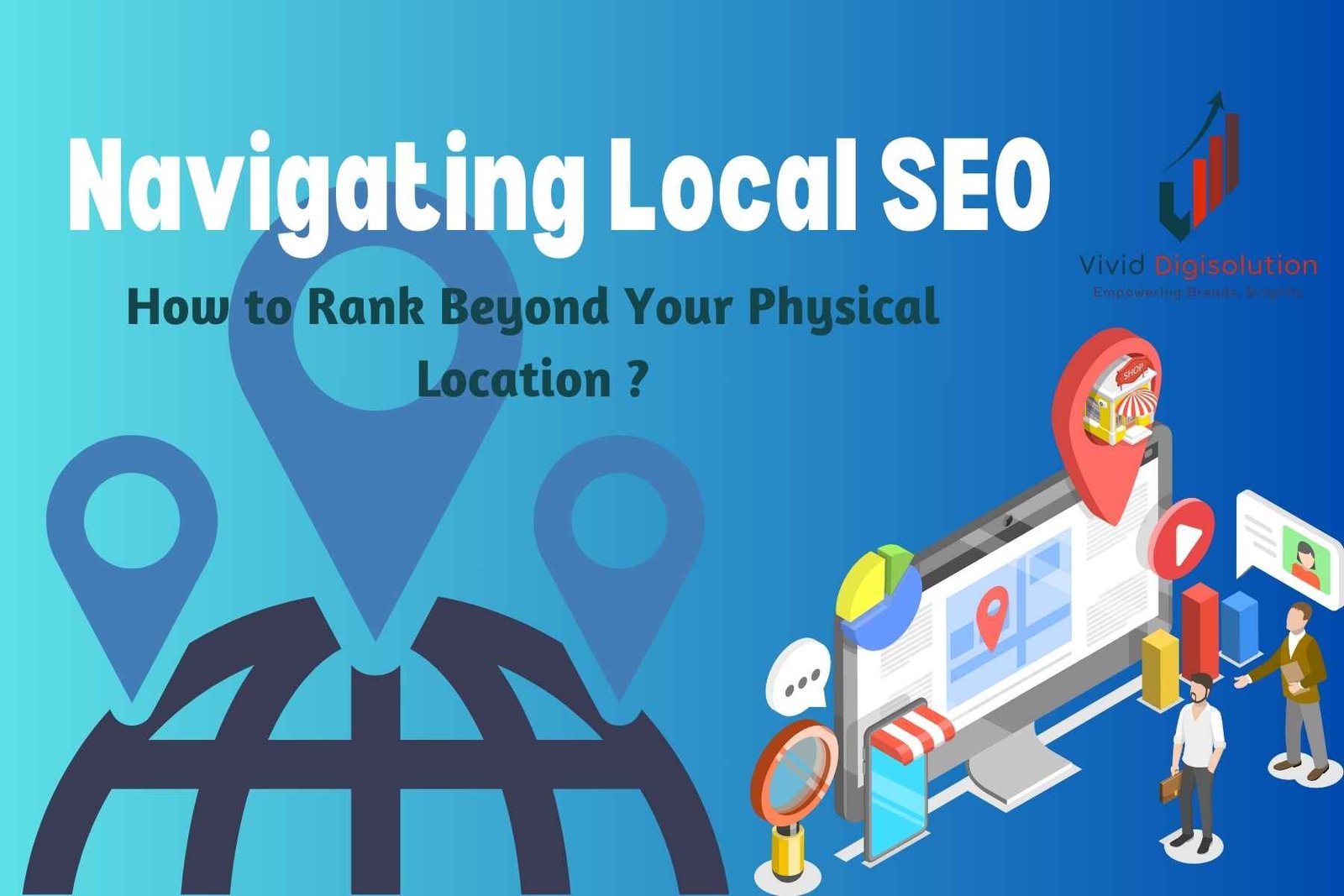Navigating Local SEO: How to Rank Beyond Your Physical Location

Navigating Local SEO: How to Rank Beyond Your Physical Location
Local SEO is about making your business visible to people in a specific geographic area. But what if you want to expand your reach and rank beyond just your local area? That’s where optimizing your Local SEO strategy comes in. Let’s explore key steps to achieve this and make your business appear in search results beyond your physical location.
1. Optimize for Nearby Locations
If you want to rank outside your city or neighborhood, try creating location-specific pages for areas around your business. For example, if you’re a restaurant in Mumbai, create separate pages targeting nearby cities like Nashik, Pune, etc… This way, when someone searches for “best pizza near Pune,” your site can appear even if your main location is in Mumbai.
Tip: Add unique content for each location page, such as customer testimonials, local photos, and detailed descriptions of your services in that area.
2. Use Location-Based Keywords
Include location-based keywords in your website content, meta titles, and descriptions. For example, if your business is an accounting firm in Delhi but you want to attract clients in other nearby areas, use keywords like “accounting firm in Noida” or “tax services in Gurugram.”
Tip: Use a tool like Google Keyword Planner or Ubersuggest to find the most relevant local keywords for your business.
3. Leverage Google My Business for Multiple Locations
If your business has multiple locations, set up a separate Google My Business (GMB) profile for each. This helps you rank for searches in those specific areas and gives you more visibility on Google Maps.
Important Stats:
- 78% of local searches on mobile result in an offline purchase(Search Engine Journal).
- 46% of all Google searches are looking for local information(Similarweb).
Having multiple GMB listings means that when someone searches for a service you offer, your business appears in their local “3-Pack” results, increasing the chances of conversion.
4. Get Listed in Local Directories
Expand your reach by listing your business in local online directories like Yelp, Yellow Pages, and Citysearch. The more places your business is listed online, the more authority your website gains, which helps you rank in multiple locations.
Tip: ensure that your business name, address, and phone number (NAP) are consistent across all directories to avoid confusion.
5. Create Local Content for Nearby Areas
Content is key to expanding your Local SEO. Write blogs or create guides about the nearby areas you want to target. For example, “Top 10 Things to Do in [Location]” or “Best [Service] in [Area Name].” This type of hyper-local content can rank well in searches and attract new customers from those areas.
Example:
If you’re a Graphic designer in Vadodara, create a blog titled, “Best Graphic Designing Tips for Beginners in Vadodara.” This makes your business visible in Burbank-related searches.
6. Build Local Backlinks
Backlinks from reputable local websites can significantly boost your Local SEO. Reach out to nearby business directories, blogs, or even local news sites to get backlinks for your business.
Strategy:
-Partner with local businesses and get featured on their websites.
-Sponsor local events to get mentions in local news articles.
7. Optimize for “Near Me” Searches
“Near me” searches have become increasingly popular. Include terms like “near me” or “close by” in your content when possible. For example, use phrases like “best restaurants near me” or “Digital marketing services close by” on your website’s homepage or service pages.
Fact:
Searches with the phrase “near me” have increased by over 200% in the past few years.
8. Use Schema Markup for Local SEO
Schema markup is a type of microdata that helps search engines understand your business information better. By using local business schema, you can display more detailed information like your business name, address, phone number, operating hours, and customer reviews directly in the search results.
Tip: Use schema for local businesses, service areas, and even products if applicable. Tools like Google’s Structured Data Markup Helper can assist you in adding this to your website.
9. Create and Optimize Google Maps Listings
If you want to expand your presence to multiple areas, creating multiple Google Maps listings for different business locations is essential. Ensure that each listing is fully optimized with photos, accurate business descriptions, and regular updates.
Actionable Step: Encourage customers to leave reviews on your Google Maps listing, as businesses with more positive reviews tend to rank higher in the map pack.
10. Use Geotagged Images on Your Website
Geotagging images means adding location data to your photos, making it easier for search engines to associate your business with a particular area. This technique can be particularly useful for service-based businesses that want to rank in various localities.
How to Do It: Use tools like GeoImgr or Pic2Map to add geographic metadata to your images before uploading them to your website.
12. Use Social Media to Boost Local Presence
Social media platforms are becoming increasingly important for Local SEO. Share local news, events, and community activities related to your business to engage with a broader audience.
Tip: Use location-based hashtags and check-in features on platforms like Instagram, Facebook, and LinkedIn to increase your visibility in specific areas.
Final Thoughts
Expanding your Local SEO beyond your immediate location requires a combination of smart strategies and consistent effort. By optimizing your content for nearby areas, leveraging tools like Google My Business, and creating location-specific content, you can increase your business’s visibility in multiple cities and neighborhoods. Implement these steps, and you’ll be on your way to dominating the local search results far beyond your physical address.
Remember, Local SEO is not just about where you are—it’s about where your customers are looking!
Recent Post
Should You Choose a Custom Website or a Template? A Simple Guide
Should You Choose a Custom Website or a Template? A Simple Guide Share this post : Should You Choose a […]
Why Every Business Needs a Website Redesign Every Few Years
Why Every Business Needs a Website Redesign Every Few Years Share this post : Why Every Business Needs a Website […]
Google Ads vs. Facebook Ads: Which is Better for Your Business?
Google Ads vs. Facebook Ads: Which is Better for Your Business? Share this post : Google Ads vs. Facebook Ads: […]
Start Consultation With Us
Make a Call
+91 95103-22143
Contact Us
info@vividdigisolution.com

